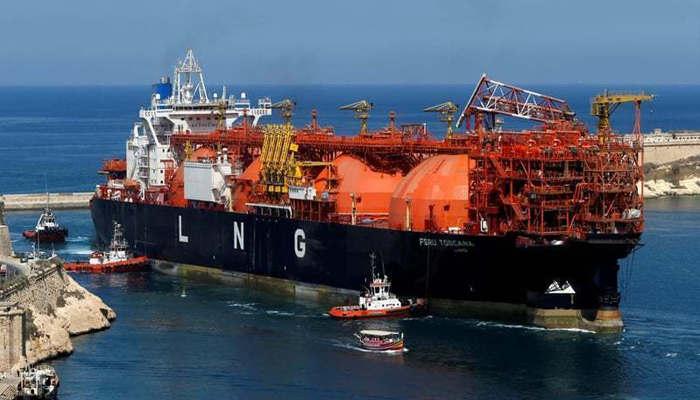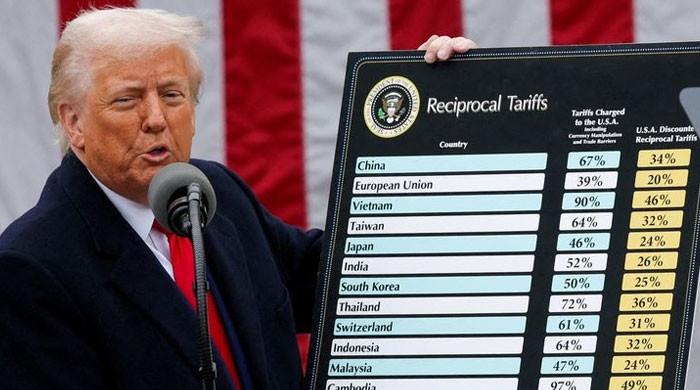Loadshedding likely to increase as Biporjoy impacts LNG cargoes' berthing
"If situation continues, gas availability for power sector will go down, leading to more power outages," says official
June 13, 2023

- Pakistan is already facing a shortfall of 6,000MW.
- If winds continue, gas cargo may not arrive.
- SNGPL consumers to face further gas shortages.
ISLAMABAD: As the "very severe cyclone system" Biparjoy approaches Sindh's coastal belt, a senior official has warned that more power loadshedding will haunt the nation in the upcoming days, The News reported.
According to the official, the LNG cargo of 100mmcfd could not be berthed in LNG Terminal-1 on Monday because of squally winds in the wake of the cyclone.
"If the situation continues, gas availability for the power sector will go down enough to declare a gas supply emergency," the senior official warned.
Such a situation will lead to more power outages in the country already facing a shortfall of 6000MW.
The gas supply to the power sector dropped to 600 from 690mmcfd because of the failure in berthing the LNG cargo at Terminal-1. If the LNG cargo is not berthed today (Tuesday) and cyclone winds continue to blow, the cargo, which is also on the way, may not arrive, warranting severe gas shortfall for the power sector.
Moreover, another LNG cargo — due to arrive at LNG Terminal-2 on June 14 — may not be berthed if the cyclone does not head to the Indian coast by then.
In this scenario, the intake of imported gas may touch the lowest ebb of 100mmcfd, but it depends on how long the severity of the cyclone continues.
Currently, the line pack stands at 5000mmcfd, which is insufficient for two days of consumption in the country.
The domestic sector in the Sui Northern Gas Pipelines Limited (SNGPL) system is being provided with just 450mmcfd system gas. The household sector is already being provided gas only at cooking times. After 10pm, no gas is available.
The Sui Southern Gas Company (SSGC) spokesman, when contacted, said imported gas intake is already deficient in its system and it will not impact SSGC consumers.
However, the imported intake, which varies in the range of 75-150mmcfd, will impact some powerhouses in Karachi.
“The domestic gas supply hovers around 550mmcfd to 750mmcfd depending upon the demand. However, the SNGPL system will be adversely impacted,” he said.
The government has decided to curtail furnace oil imports for power generation due to the dollar crunch and to keep reliance on power generation through RLNG-based, coal-run power plants, hydropower plants, and nuclear powerhouses.
Hydrogenation from the main dams of Tarbela and Mangla depends upon the water releases, which fluctuate on the provinces' demand for irrigation.
The official added that because of the ongoing construction work of Tarbela Dam for the fourth and fifth extension power projects, about 1,410MW was not coming into the system.
Neelum-Jehlum Hydropower Project is also non-operational, which has resulted in a shortfall of 969MW in the system.
Moreover, other power units of the Tarbela Dam are generating low electricity because of construction issues and fluctuations in the water release as per demands from provinces.
On top of this, line and recovery losses are also on the higher side. Therefore, higher generation also translates to higher losses. The official said that due to certain constraints, hydropower was not being utilised at full capacity.
Powerhouses are currently running over 13% to 64% of their capacity mainly because of the Rs2.5 trillion circular debt.
"The government alone owes the China-Pakistan Economic Corridor power project $1 billion,” the official said.











